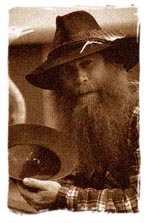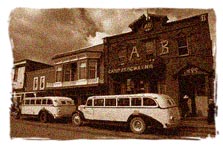
 |
 he fight for Alaska
statehood began in the early 20th century, after gold rushes in the
North brought national attention to Alaska. Since the Alaska
purchase in 1867, Alaska had been under the jurisdiction of the U.S.
Army (1867 - 1877), the U.S. Treasury Department (1877 - 1879) and
the U.S. Navy (1879 - 1884), before becoming the District of Alaska
in 1884 with a territorial governor appointed by the president of
the United States. he fight for Alaska
statehood began in the early 20th century, after gold rushes in the
North brought national attention to Alaska. Since the Alaska
purchase in 1867, Alaska had been under the jurisdiction of the U.S.
Army (1867 - 1877), the U.S. Treasury Department (1877 - 1879) and
the U.S. Navy (1879 - 1884), before becoming the District of Alaska
in 1884 with a territorial governor appointed by the president of
the United States.
|

In 1906, Alaska was given a non-voting delegate in Washington. In
1912, Congress passed a bill written by Judge James Wickersham,
making Alaska a territory. Although many Alaskans insisted they
deserved to be a full-fledged state, it wasn't until the 1940's that
the U.S. government began to seriously consider its statehood.
During World War II, the Defense Department constructed military
bases and the Alaska Highway. When the Japanese bombed Dutch Harbor
and occupied Attu and Kiska islands in 1942, the strategic military
people remained in the territory, but adversaries of statehood
argued that its population was still too sparse and its location too
distant for it to be a state. |
  |
  |
Another argument against statehood was Alaska's lack of a sound
economic base. The discovery of oil in 1957 helped the territory
leap the final hurdle toward becoming a state. As Alaska's immense
wealth of resources was realized, Congress was quickly convinced to
disregard past arguments against statehood. On January 3, 1959,
President Dwight D. Eisenhower signed into law the 49th state of the
union.
|
|